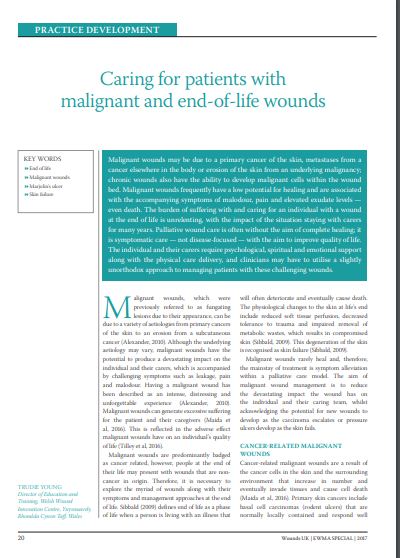Malignant wounds may be due to a primary cancer of the skin, metastases from a cancer elsewhere in the body or erosion of the skin from an underlying malignancy; chronic wounds also have the ability to develop malignant cells within the wound bed. Malignant wounds frequently have a low potential for healing and are associated with the accompanying symptoms of malodour, pain and elevated exudate levels even death. The burden of suffering with and caring for an individual with a wound at the end of life is unrelenting, with the impact of the situation staying with carers for many years. Palliative wound care is often without the aim of complete healing; it is symptomatic care not disease-focused with the aim to improve quality of life. The individual and their carers require psychological, spiritual and emotional support along with the physical care delivery, and clinicians may have to utilise a slightly unorthodox approach to managing patients with these challenging wounds.







